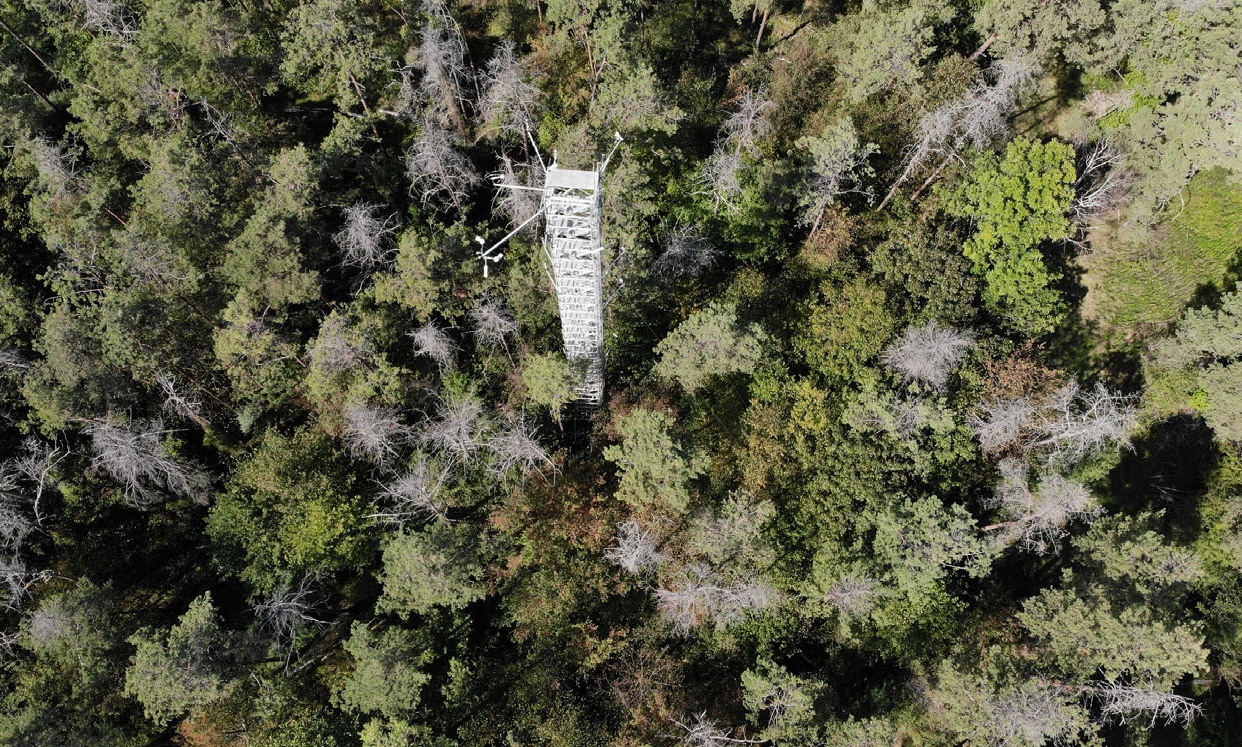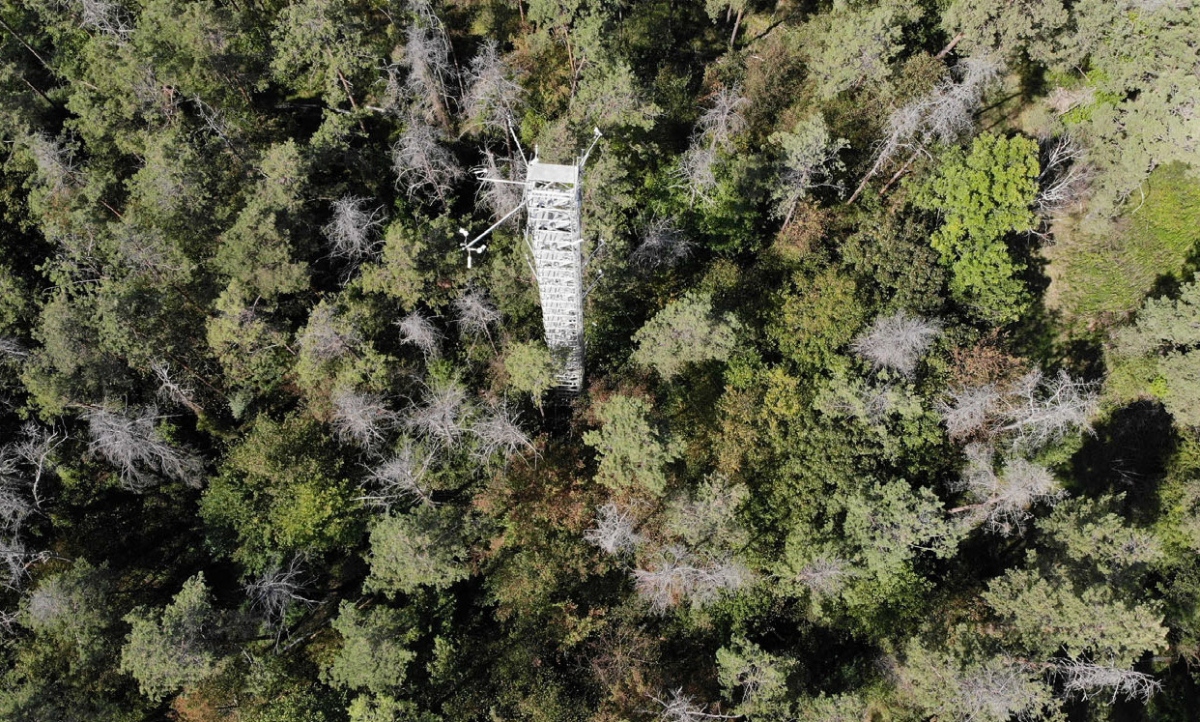
A new study conducted at the University of Freiburg shows that recurring years of heat and drought since 2018 have caused long-term damage to a pine forest in southwestern Germany. Over 60 percent of the pine trees have died, and deciduous trees are taking root, but it is insufficient to reclaim climate balance. The ecosystem now releases more CO₂ than it sequesters.
Repeated heat waves and droughts not only cause acute damage to pine forests, but they can also lead to long-term changes and damage to the forest, which are known as “legacy effects.” This is shown by a field study and data analysis conducted by the University of Freiburg in a pine forest near Hartheim am Rhein in southwestern Germany. Using satellite and climate data as well as ecophysiological measurements, the researchers demonstrated that the drought years starting in 2018 led to a structural change in the forest ecosystem under investigation: deciduous tree species are increasingly replacing the originally dominant Scots pines. In addition, the forest was no longer able to sequester CO₂ from the atmosphere and began to release CO₂ itself on an annual basis. The results of the study were published in the journal Plant Biology.

“Our data show that the forest has undergone fundamental changes due to the recurring heat waves and droughts since 2018 and has passed a tipping point. It has changed from a carbon sink to a carbon source,” says Dr. Simon Haberstroh, first author of the study and postdoctoral researcher at the Chair of Ecosystem Physiology at the University of Freiburg. “The main reason for this change is the massive die-off of pine trees. Although the pines are slowly being replaced by deciduous trees, this cannot yet compensate for the negative CO₂ balance.”
Longitudinal observational study enables comparison before and after the 2018 drought period
The study is based on data from the Hartheim forest research site (DE-Har) in the Upper Rhine Plain, where researchers from the University of Freiburg have been collecting environmental and meteorological data for decades. The experimental forest is part of the European research infrastructure ICOS (Integrated Carbon Observation System), to which the Freiburg researchers contribute on a long-term basis, providing important data for climate research.
The longitudinal observational study has enabled the researchers to compare data from the period before the drought (2003–2006) with the years after (2019–2023). Researchers from the departments of ecosystem physiology and environmental meteorology worked closely together on the study. This has allowed the team to combine different types of measurements: ecophysiological data such as water flow in trees (‘sap flow’), remote sensing data on vegetation vitality (Enhanced Vegetation Index, EVI), and micrometeorological measurements of carbon exchange between the forest and the atmosphere (Net Ecosystem Carbon Exchange, NEE).
Massive pine tree dieback since 2018
The researchers were able to show that between 2003 and 2006, the forest sequestered an average of 391 grams of carbon per square metre per year. However, with the heatwave and drought that began in 2018, the CO₂ balance became neutral to negative. “If this effect observed in Hartheim occurs on a large scale, we would lose the function of forests to partially bind man-made CO2 emissions and mitigate the climate impact of our emissions. Instead, this would further accelerate climate change,” explains Prof. Dr. Andreas Christen, co-author of the study and Professor of Environmental Meteorology at the University of Freiburg. In the wet and cool year of 2021, the ecosystem behaved almost carbon-neutral with CO₂ emissions of 13 grams per square metre. In the drier and hotter years of 2019, 2020, 2022 and 2023, however, the ecosystem turned into a carbon source, with a peak of 329 grams of carbon emitted per square metre in the hot year of 2022. The researchers identified massive damage to Scots pines (Pinus sylvestris), of which over 60 percent had died by 2023, as the cause. The surviving pines showed a sharp decline in water transport. They were increasingly replaced by deciduous trees such as hornbeam (Carpinus betulus), lime (Tilia spp.) and beech (Fagus sylvatica).
“However, the shift from coniferous to deciduous forest does not automatically lead to a recovery of forest ecosystems,” explains Prof. Dr. Christiane Werner, last author of the study and Professor of Ecosystem Physiology at the University of Freiburg. ‘We must not overestimate the resilience of our forests to climate stress and need more research to understand the changes and damage to forest ecosystems caused by climate change.’
- This press release was originally published on the University of Freiburg website. Read the original here.